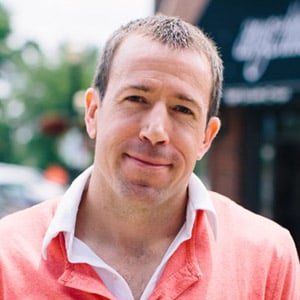- What's New
- Pricing & Purchasing
- Lead Times
- Literature & Samples
- Services & Warranties
- Careers
- Find a Rep
10,000 Hours - The Pursuit of Academic Excellence

I'm a native of the Chicago suburbs. And that means I spent more than a decade watching Michael Jordan, the greatest basketball player who has ever lived. How'd he get there? Practice, and a whole lot of it. No less than 10,000 hours, to be specific.
Author Malcolm Gladwell published an entire book about superlative talents like Jordan. In "Outliers," he argued that it takes 10,000 hours of practice to master a pursuit. In Gladwell's mind, that's how the Beatles became the greatest band in musical history and how Bill Gates perfected his understanding of computers.
Our nation's educational system offers our children the chance to work toward that 10,000 hour goal. By my count, the average students spends 10,800 - 12,000 "instructional" hours in the classroom. A two-year college can add another 3,840 hours; a four-year program, 7,680.
We in the educational design community have an obligation to help teachers and students take advantage of those hours -- by activating learning environments that engage students on a human centered level and that grant them permission to learn in the manner that fits them best, where the 10,000 hours they need to master something fly by.
I certainly didn't take advantage of the 10,000-plus hours I spent in school. I may have accumulated 10,000 hours playing soccer and celebrating the Chicago Bulls' championships. But I did not leave high school or college with a clear direction or mastery of a pursuit. I graduated with a degree in finance, jobless, and for the first time realized that A (K-12) + B (College) does not always equal C (a fulfilling career that rewards me).
That changed when I joined KI in 2006, and through situated experiences, I became a "Free-Range Learner". My journey in marriage, inspiration professionally in the form of my children, and my partnership with KI have inspired me to want to learn for the first time in years. I saw that KI had been a trusted and longstanding partner for so many learning institutions. That trust gives us an opportunity to authentically re-imagine the way that teachers teach and students learn -- and to make sure that our kids have the opportunity, and invitation, to spend their 10,000 hours in school as connected and engaged learners.
My own recent educational journey stands out as an example of this new model of pedagogy. Within the past 10 years, my education has been personalized entirely, rooted in social and peer-to-peer experience, and based on developing competencies specific to the marketplace I aim to contribute to. For me, this included time at Stanford University's d.school to deepen my understanding of design thinking, coursework through IDEO-U, and an altMBA from the author Seth Godin. Looking ahead, my Free Range Learner's Journey also includes a 2017 visit to Harvard's Graduate School of Education for their Learning Environments for Tomorrow course. Programs like these have shifted away from traditional teaching, with "captive" audiences and one-size-fits-all pedagogy, in favor of instruction that's savvy, integrated, and personalized to each and every student.
Why can't we design spaces and products that empower all students to become Free-Range Learners? The status quo, particularly in college, clearly isn't working. In 2015, the average college student graduated with $35,000 in debt. And his degree may not have guaranteed him a job.
By focusing on developing competencies and the accumulation of real-life skills -- ones we wouldn't mind spending 10,000 hours on -- Free-Range Learning could represent a far more effective and far less costly way to educate people.
I haven't yet reached my 10,000 hour goal. But it's now in sight, thanks to the emergence of new programs and learning environments that are personalized for me and how I learn.
To learn more about Free-Range Learning, I encourage you to download KI's white paper, "The Learner's Journey: 4 Learning-Space Scenarios That Reflect 13 Dynamic Trends Impacting the Future of Education".
Subscribe
Stay up to date with the latest trends and more.
